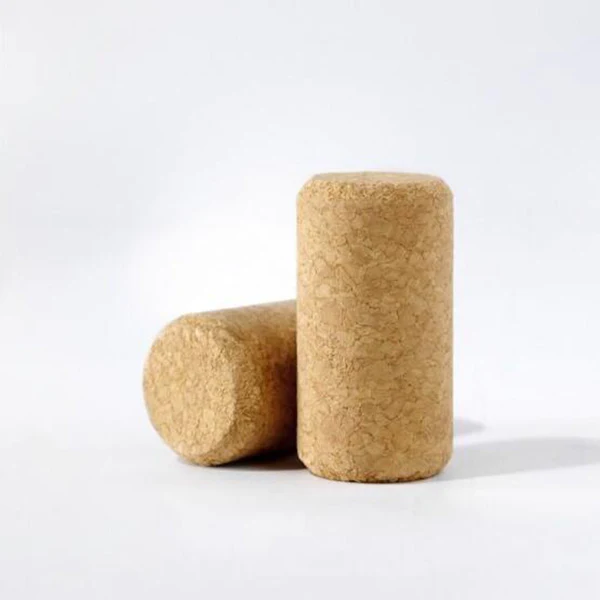The world of wine is one of passion, tradition and innovation, where every detail counts. Among these details, the choice of cork is far from insignificant.
Il a un impact direct sur la conservation, le vieillissement et la dégustation du vin. Oeni, votre app de gestion de cave à vin avec sommelier sur iOS et Android vous propose une exploration approfondie des différents types de bouchons et de leurs influences sur le vin.
Les différents types de bouchons
1) Le bouchon en liège naturel : tradition et respiration

Le bouchon en liège naturel représente la tradition viticole dans ce qu’elle a de plus emblématique. Issu de l’écorce du chêne-liège, principalement récolté au Portugal, ce bouchon est apprécié pour ses propriétés quasi-miraculeuses.
Il est à la fois élastique et imperméable, permettant ainsi au vin de s’épanouir et de vieillir dans des conditions optimales. La capacité du liège à “respirer” permet un échange d’oxygène mesuré, essentiel pour le vieillissement des vins rouges de garde.
Cependant, le liège naturel peut parfois souffrir de variations de qualité et est sujet au “goût de bouchon”, un défaut aromatique causé par des composés chimiques comme le TCA (trichloroanisole).
2) Le bouchon en liège aggloméré : économie et uniformité
Pour pallier les variations de qualité et réduire les coûts, l’industrie a développé le bouchon en liège aggloméré.
Ces bouchons sont faits de granulés de liège liés par une résine, ce qui offre une uniformité plus grande et un coût inférieur.
Ils sont généralement destinés aux vins jeunes, qui seront consommés dans les deux ans suivant leur mise en bouteille, car ils ne possèdent pas les mêmes propriétés élastiques et durables que le liège naturel.

3) Le bouchon synthétique : innovation et consistance

En réponse aux défis posés par le liège, l’industrie du vin a vu l’émergence de bouchons synthétiques.
Ces bouchons, souvent faits de plastique ou de matériaux dérivés du pétrole, offrent une barrière contre le TCA et une consistance de qualité de bouchage. Ils ne se dégradent pas et ne modifient pas le goût du vin par un vieillissement.
Cependant, ils sont moins perméables à l’oxygène, ce qui peut être un inconvénient pour les vins destinés à une longue maturation.
4) La capsule à vis : praticité et modernité
La capsule à vis a révolutionné l’industrie du vin en offrant une alternative pratique aux bouchons traditionnels. Elle assure une fermeture hermétique et élimine presque totalement le risque de défauts liés au bouchon. La capsule à vis est particulièrement appréciée dans les vins destinés à une consommation rapide, comme de nombreux vins blancs et rosés.
Elle permet également une réouverture et une fermeture faciles, ce qui est idéal pour les consommateurs qui ne terminent pas leur bouteille en une seule occasion.

5) Le bouchon de verre : élégance et performance

Le bouchon de verre est une innovation relativement récente et représente une solution élégante et performante pour sceller les bouteilles de vin.
Ces bouchons offrent une étanchéité parfaite et sont réutilisables, ce qui séduit les consommateurs écologiquement conscients.De plus, ils présentent un aspect haut de gamme et sont souvent utilisés pour des vins de qualité supérieure.
L’évolution et l’avenir des bouchons de vin
L’industrie du vin continue de rechercher des solutions innovantes pour améliorer la qualité des bouchons. Parmi les développements récents, on trouve des bouchons techniques qui combinent des matériaux comme le liège et le plastique pour tirer parti des avantages de chaque matériau.
D’autres recherches se concentrent sur l’utilisation de matériaux durables et biodégradables, tels que le liège recyclé ou les polymères d’origine végétale, pour réduire l’impact environnemental.
Le choix du bouchon, un reflet de la philosophie du vigneron
Le choix du bouchon est un reflet de la philosophie du vigneron et de ses intentions pour le vin. Que ce soit pour un vieillissement prolongé, une consommation immédiate, ou pour des considérations écologiques, chaque type de bouchon a ses avantages et ses inconvénients.
Le débat entre tradition et innovation continue de susciter des discussions animées parmi les amateurs et les professionnels du vin. Ce qui est certain, c’est que le bouchon reste un élément crucial dans l’expression et la conservation du vin.





